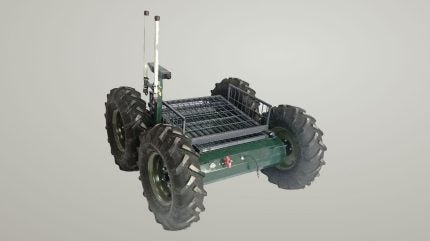
Ukraine’s Ministry of Defence announced it has codified and adopted a new line of uncrewed ground vehicles (UGVs), known as ‘Gimli’, on 4 February 2025.
The autonomous system will conduct a range of logistical tasks in the heat of battle: from troop evacuation and extraction to transporting ammunition and resources.
Depending on the configuration, the robot can also be used as a mobile combat module in its own right when fixed with a weapons payload, conducting fire support against enemy targets.
Gimli UGVs are compact, making them easy to transport. The system comes with a silent electric motor; and with a full charge, the battery lasts for several hours of continuous operation. These robots can operate in the day and at night.
Ukraine’s Main Directorate for Support and Life Cycle of Weapons and Military Equipment agency did not reveal the company that built, developed, or designed the system.
UGVs on the rise
Over the next decade, GlobalData expects the combat segment to dominate the global UGV market; the segment accounts for a 42.1% market share.
This is followed by the logistics segment which registers a 26% share, then Intelligence, Surveillance and Reconnaissance segment with a 19% share, among other types.
However, uncrewed systems are now largely modular, meaning users are able to reconfigure uncrewed systems fairly easily – Gimli is one such case.
Learning from the high intensity warfare in Ukraine, the US Army’s Robotic Combat Vehicle (RCV) programme envisions the development of three separate armed UGVs that could be employed as scouts or escorts for crewed vehicles and mobile land forces.
Past UGV platforms, however, were mainly tailored for explosive ordinance disposal operations due to the limited autonomy and mobility technologies available. Though, this type has now fallen to a market share of 13%.




